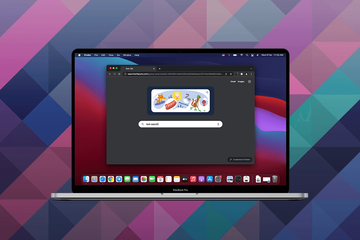When caught up in a new web search redirect campaign, Mac users repeatedly visit searchwithpure.com site instead of their preferred service.
| Threat Profile | |
|---|---|
| Name | Search With Pure redirect virus |
| Category | Mac browser hijacker, Mac adware |
| IP Address | 172.67.145.96 |
| Related Domains | searchwithpure.com, surfitnow.xyz |
| Symptoms | Redirects web searches to searchwithpure.com via intermediate sites (ad networks), injects ads into search results, slows down the system |
| Distribution Techniques | Freeware bundles, torrents, fake software updates, misleading popup ads, spam |
| Severity Level | Medium |
| Damage | Privacy issues due to Internet activity tracking, search redirects, unauthorized modification of browsing preferences, unwanted ads |
| Removal | Scan your Mac with Combo Cleaner to detect all files related to the browser hijacker. Use the tool to remove the infection if found. |
What is Search With Pure?
Browser-focused malware is the king of today’s Mac threat terrain. Not in terms of the damage it causes, but quantity-wise and in terms of the nuisance factor. The idea behind it is to reorganize the Internet surfing patterns on a contaminated computer so that a specific website is visited in a loop. To bring a scheme like this to fruition, crooks need a piece of malicious code, a well-thought-out infection cycle, and a marketing strategy that pays off. In the case of the searchwithpure.com browser hijack, all of these criteria are met. It relies on an unwanted Mac application to wreak web traffic redirecting havoc, involves a malvertising stratagem to make the rounds, and harbors a monetization mechanism to generate shadowy gain.
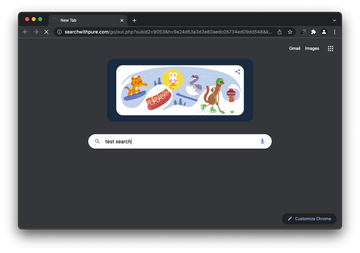
The attack usually begins with an onset of a trojanized add-on in the victim’s web browser. Speaking of which, Google Chrome is by far most frequently targeted across the board. The original surge of infections was observed in early February 2022 and had to do with an extension called “What Font – find font”. On the face of it, this lightweight applet looks harmless and fairly handy for those who want to identify fonts on web pages they visit. The whole awesomeness goes down the drain when people who have added this extension to Chrome find themselves stuck with frequent rerouting to searchwithpure.com or its companion site surfitnow.xyz whenever they try to look up random information on Google. In many episodes, users are redirected to Bing.
Searchwithpure.com virus may re-infect your Mac multiple times unless you delete all of its fragments, including hidden ones. Therefore, it is recommended to download Combo Cleaner and scan your system for these stubborn files. This way, you may reduce the cleanup time from hours to minutes.
Download Now Learn how Combo Cleaner works. If the utility spots malicious code, you will need to buy a license to get rid of it.Having gone through trial and error, those affected found that disabling the “What Font – find font” extension fixed the redirect bug. At the time of writing, this Chrome helper object appears to be working as intended, which may be a clue that the publisher has since rectified things. By the way, rogue behavior of this legit piece of software isn’t necessarily a matter of the vendor’s bad intentions. It’s also within the realms of possibility that a malicious third party had gained unauthorized access to the app’s code and modified it behind the author’s back. Users who installed the poisoned version via the official Chrome Web Store during that period ran into the search takeover frenzy in question.
Booby-trapped extensions have always maintained their presence in trusted marketplaces, typically in small quantities and with a limited impact. The searchwithpure.com campaign is one of the few that stand out. It has rapidly extended its reach over a large user audience; plus, its focus on the Mac territory is somewhat unusual for this style of exploitation. One more quirk that sets this story aside from others is that the tactic is kind of half-baked. Lots of victims have reported ending up on a blank page or getting a 404 error when their Google searches are forwarded to searchwithpure.com. This could be a sign of misconfiguration on malware operators’ part, but it may also be an attempt to smokescreen a series of quiet, momentary hits to advertising networks’ URLs before the weird landing page is resolved in the address bar. Furthermore, this scenario fits the mold of a test run preceding a larger-scale ruse.
One way or another, these instances of redirecting cause a ton of frustration to the infected users. Whereas the initial infection vector through a malware-riddled browser extension has been rooted out, new propagation techniques are likely to emerge down the line. That being said, here is a battle-tested way to stop a web browser on Mac from being rerouted to searchwithpure.com.
Searchwithpure.com virus manual removal for Mac
The steps listed below will walk you through the removal of this malicious application. Be sure to follow the instructions in the specified order.
Expand the Go menu in your Mac’s Finder bar and select Utilities as shown below.
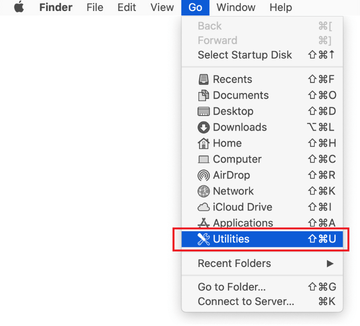
Locate the Activity Monitor icon on the Utilities screen and double-click on it.
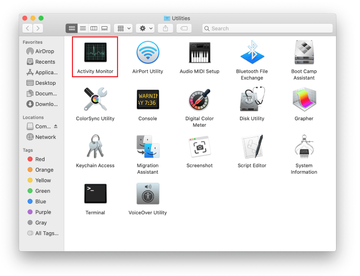
In the Activity Monitor app, look for a process that appears suspicious. To narrow down your search, focus on unfamiliar resource-intensive entries on the list. Keep in mind that its name isn’t necessarily related to the way the threat is manifesting itself, so you’ll need to trust your own judgement. If you pinpoint the culprit, select it and click on the Stop icon in the upper left-hand corner of the screen.
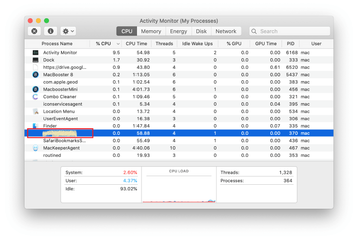
When a follow-up dialog pops up asking if you are sure you want to quit the troublemaking process, select the Force Quit option.
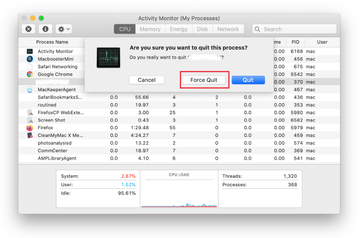
Click on the Go menu icon in the Finder again and select Go to Folder. You can as well use the Command-Shift-G keyboard shortcut.

Type /Library/LaunchAgents in the folder search dialog and click on the Go button.
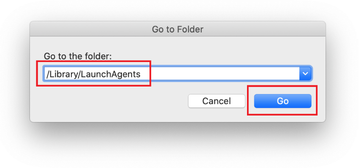
Examine the contents of the LaunchAgents folder for dubious-looking items. Be advised that the names of files spawned by malware may give no clear clues that they are malicious, so you should look for recently added entities that appear to deviate from the norm.
As an illustration, here are several examples of LaunchAgents related to mainstream Mac infections: com.updater.mcy.plist, com.avickUpd.plist, and com.msp.agent.plist. If you spot files that don’t belong on the list, go ahead and drag them to the Trash.
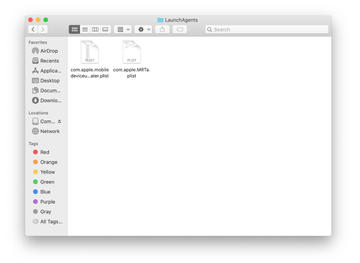
Use the Go to Folder lookup feature again to navigate to the folder named ~/Library/Application Support (note the tilde symbol prepended to the path).
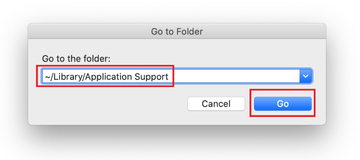
When the Application Support directory is opened, identify recently generated suspicious folders in it and send them to the Trash. A quick tip is to look for items whose names have nothing to do with Apple products or apps you knowingly installed. A few examples of known-malicious folder names are com.AuraSearchDaemon, ProgressSite, and IdeaShared.
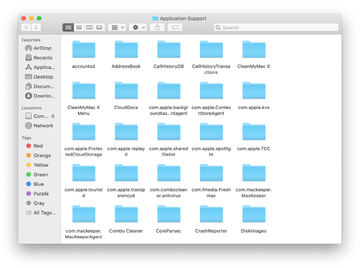
Enter ~/Library/LaunchAgents string (don’t forget to include the tilde character) in the Go to Folder search area.
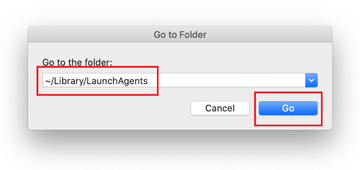
The system will display LaunchAgents residing in the current user’s Home directory. Look for dodgy items related to searchwithpure.com redirect virus (see logic highlighted in subsections above) and drag the suspects to the Trash.
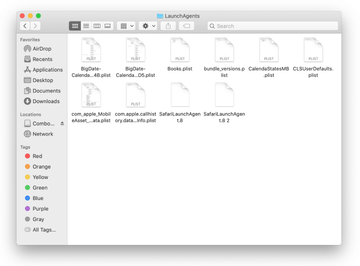
Type /Library/LaunchDaemons in the Go to Folder search field.
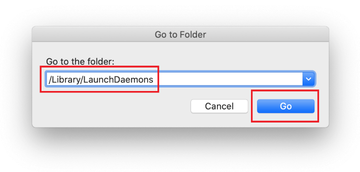
In the LaunchDaemons path, try to pinpoint the files the malware is using for persistence. Several examples of such items cropped by Mac infections are com.pplauncher.plist, com.startup.plist, and com.ExpertModuleSearchDaemon.plist. Delete the sketchy files immediately.
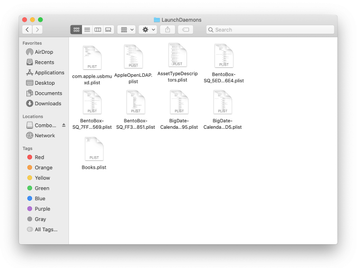
Click on the Go menu icon in your Mac’s Finder and select Applications on the list.

Find the app that clearly doesn’t belong there and move it to the Trash. If this action requires your admin password for confirmation, go ahead and enter it.
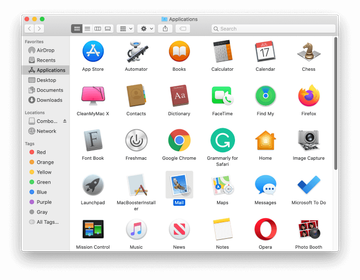
Expand the Apple menu and select System Preferences.
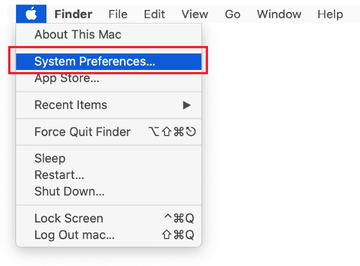
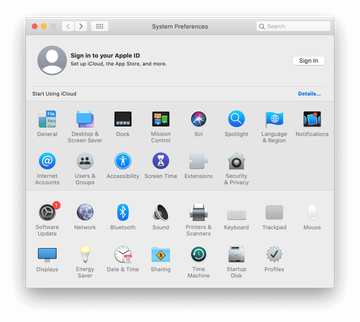
Proceed to Users & Groups and click on the Login Items tab.
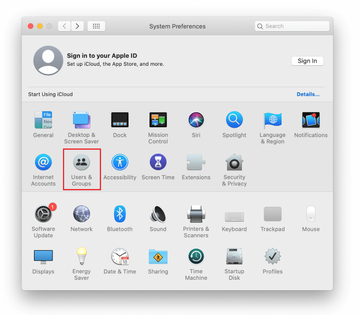
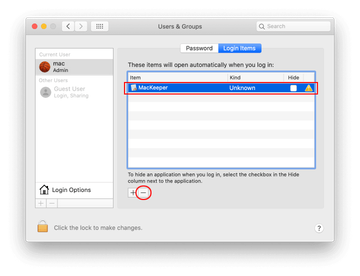
Now select Profiles under System Preferences. Look for a malicious item in the left-hand sidebar. Several examples of configuration profiles created by Mac adware include TechSignalSearch, MainSearchPlatform, AdminPrefs, and Safari Preferences. Select the offending entity and click on the minus sign at the bottom to eliminate it.
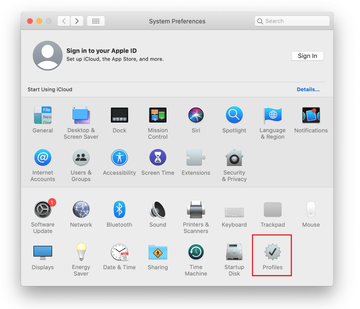
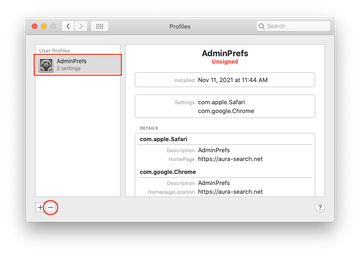
Get rid of searchwithpure.com virus in web browser on Mac
To begin with, the web browser settings taken over by the searchwithpure.com virus should be restored to their default values. Although this will clear most of your customizations, web surfing history, and all temporary data stored by websites, the malicious interference should be terminated likewise. The overview of the steps for completing this procedure is as follows:
- Remove searchwithpure.com virus from Safari
Open the browser and go to Safari menu. Select Preferences in the drop-down list.
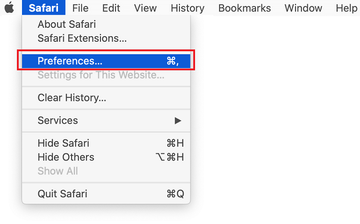
Once the Preferences screen appears, click on the Advanced tab and enable the option saying “Show Develop menu in menu bar”.
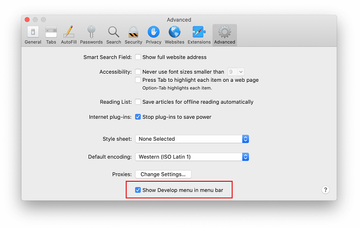
Now that the Develop entry has been added to the Safari menu, expand it and click on Empty Caches.
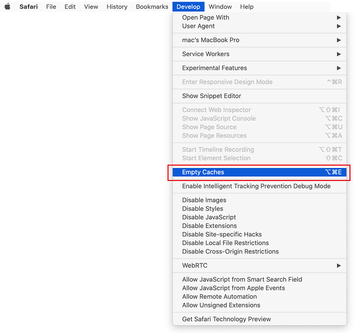
Now select History in the Safari menu and click on Clear History in the drop-down list.
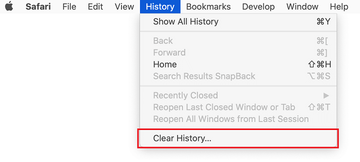
Safari will display a dialog asking you to specify the period of time this action will apply to. Select all history to ensure a maximum effect. Click on the Clear History button to confirm and exit.

Go back to the Safari Preferences and hit the Privacy tab at the top. Find the option that says Manage Website Data and click on it.

The browser will display a follow-up screen listing the websites that have stored data about your Internet activities. This dialog additionally includes a brief description of what the removal does: you may be logged out of some services and encounter other changes of website behavior after the procedure. If you’re okay with that, go ahead and click on the Remove All button.
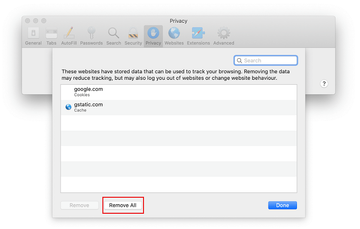
Restart Safari
- Remove searchwithpure.com in Google Chrome
Open Chrome, click the Customize and control Google Chrome (⁝) icon in the top right-hand part of the window, and select Settings in the drop-down
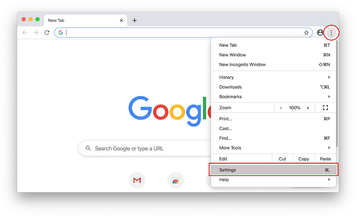
When on the Settings pane, select Advanced
Scroll down to the Reset settings section.
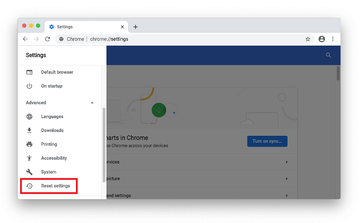
Confirm the Chrome reset on a dialog that will pop up. When the procedure is completed, relaunch the browser and check it for malware activity.
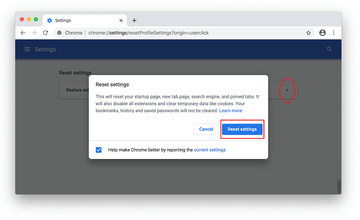
- Remove searchwithpure.com from Mozilla Firefox
Open Firefox and go to Help – Troubleshooting Information (or type about:support in the URL bar and press Enter).
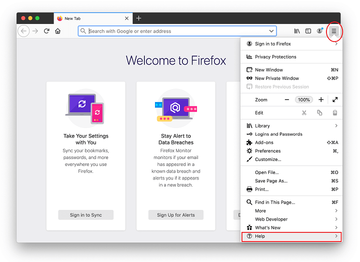

When on the Troubleshooting Information screen, click on the Refresh Firefox button.
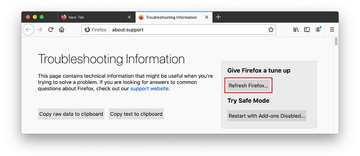
Confirm the intended changes and restart Firefox.
Get rid of Search With Pure virus using Combo Cleaner removal tool
The Mac maintenance and security app called Combo Cleaner is a one-stop tool to detect and remove searchwithpure.com virus. This technique has substantial benefits over manual cleanup, because the utility gets hourly virus definition updates and can accurately spot even the newest Mac infections.
Furthermore, the automatic solution will find the core files of the malware deep down the system structure, which might otherwise be a challenge to locate. Here’s a walkthrough to sort out the searchwithpure.com issue using Combo Cleaner:
Download Combo Cleaner installer. When done, double-click the combocleaner.dmg file and follow the prompts to install the tool onto your Mac.
By downloading any applications recommended on this website you agree to our Terms and Conditions and Privacy Policy. The free scanner checks whether your Mac is infected. To get rid of malware, you need to purchase the Premium version of Combo Cleaner.
Open the app from your Launchpad and let it run an update of the malware signature database to make sure it can identify the latest threats.
Click the Start Combo Scan button to check your Mac for malicious activity as well as performance issues.
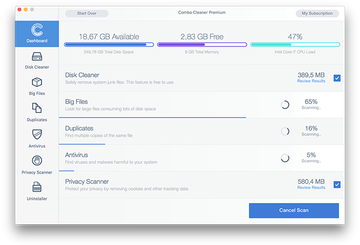
Examine the scan results. If the report says “No Threats”, then you are on the right track with the manual cleaning and can safely proceed to tidy up the web browser that may continue to act up due to the after-effects of the malware attack (see instructions above).
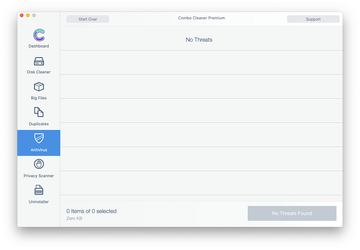
In case Combo Cleaner has detected malicious code, click the Remove Selected Items button and have the utility remove searchwithpure.com threat along with any other viruses, PUPs (potentially unwanted programs), or junk files that don’t belong on your Mac.
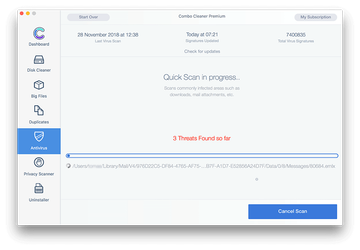
Once you have made doubly sure that the malicious app is uninstalled, the browser-level troubleshooting might still be on your to-do list. If your preferred browser is affected, resort to the previous section of this tutorial to revert to hassle-free web surfing.
